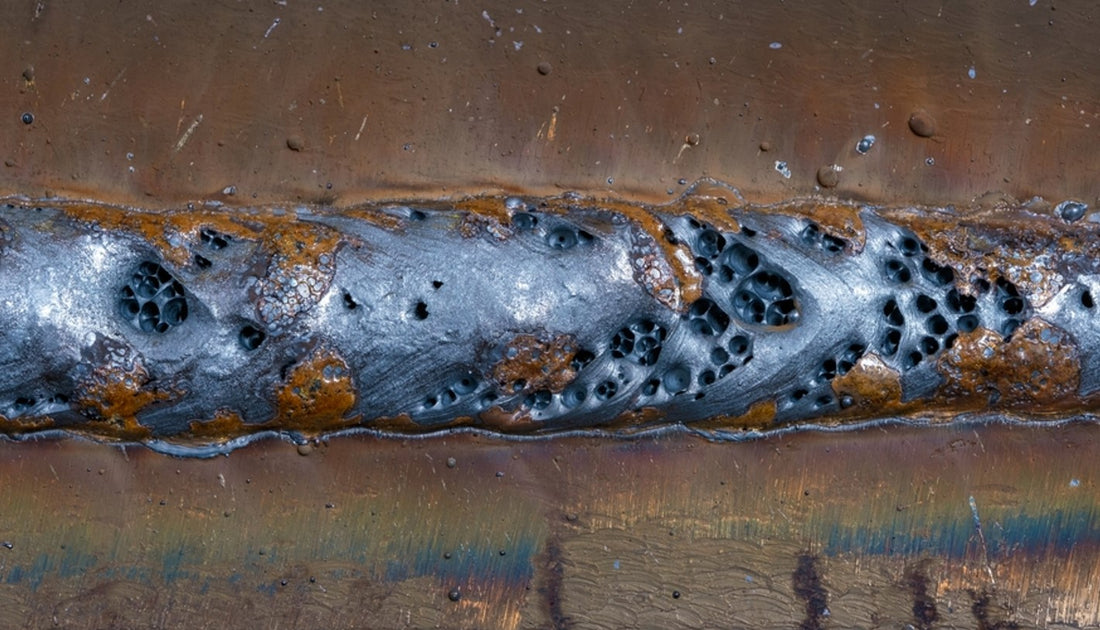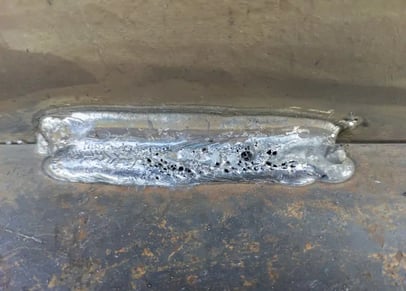What is Porosity in Welding: Usual Resources and Efficient Remedies
What is Porosity in Welding: Usual Resources and Efficient Remedies
Blog Article
Deciphering the Mystery of Porosity in Welding: Tips for Decreasing Defects and Taking Full Advantage Of Quality
In the intricate world of welding, porosity continues to be a persistent difficulty that can significantly affect the top quality and integrity of welded joints. Recognizing the factors that add to porosity development is crucial in the quest of remarkable welds. By unraveling the mystery of porosity and carrying out reliable strategies for problem reduction, welders can raise the criteria of their work to achieve remarkable top quality end results. As we look into the depths of porosity in welding, uncovering the tricks to its prevention and control will certainly be vital for specialists looking for to understand the art of top quality weldments.
Comprehending Porosity in Welding
Porosity in welding, a typical problem encountered by welders, describes the visibility of gas pockets or gaps in the bonded product, which can endanger the stability and quality of the weld. These gas pockets are generally entraped during the welding procedure because of numerous factors such as incorrect shielding gas, infected base products, or inaccurate welding criteria. The formation of porosity can weaken the weld, making it at risk to cracking and deterioration, ultimately leading to architectural failures.
By identifying the importance of keeping proper gas protecting, ensuring the sanitation of base products, and optimizing welding setups, welders can dramatically decrease the probability of porosity development. In general, a thorough understanding of porosity in welding is vital for welders to generate high-quality and long lasting welds.

Common Reasons For Porosity
When evaluating welding processes for prospective top quality issues, understanding the typical root causes of porosity is essential for maintaining weld stability and stopping structural failings. Porosity, identified by the presence of cavities or voids in the weld metal, can substantially endanger the mechanical properties of a welded joint. One typical source of porosity is inappropriate shielding gas coverage. Inadequate shielding gas flow rates or improper gas mixtures can bring about climatic contamination, causing porosity development.
Furthermore, welding at inappropriate parameters, such as exceedingly high travel speeds or currents, can generate excessive disturbance in the weld pool, trapping gases and causing porosity. By dealing with these common causes with appropriate gas securing, product prep work, and adherence to ideal welding criteria, welders can minimize porosity and improve the high quality of their welds.
Methods for Porosity Avoidance
Implementing effective preventative procedures is essential in reducing the event of porosity in welding procedures. One technique for porosity prevention is making sure appropriate cleansing of the base metal prior to welding. Contaminants such as oil, oil, rust, and paint can result in porosity, so thorough cleaning utilizing ideal solvents or mechanical approaches is vital.

Using high-quality filler materials and protecting gases that are suitable for the base metal and welding procedure can significantly reduce the threat of porosity. In addition, keeping correct welding specifications, such as voltage, present, travel speed, and gas flow rate, is vital for porosity prevention.
In addition, using correct welding methods, such as preserving a consistent travel rate, electrode angle, and arc length, can assist avoid porosity (What is Porosity). Sufficient training of welders to ensure they adhere to finest practices and quality assurance treatments is likewise vital in reducing porosity defects in welding

Best Practices for Quality Welds
One key method is keeping appropriate sanitation in the welding location. Thoroughly cleaning up the workpiece and bordering area prior to welding can help alleviate these concerns.
One more ideal method is to carefully choose the appropriate welding Clicking Here specifications for the details materials being joined. This consists of establishing the appropriate voltage, current, take a trip rate, and shielding gas flow price. Correct parameter choice makes certain optimal weld penetration, combination, and general quality. Utilizing top notch welding consumables, such as electrodes and filler steels, can considerably affect the final weld high quality. Purchasing costs consumables can cause more powerful, more durable welds with fewer defects. By following these finest methods, welders can constantly create top notch welds that fulfill sector criteria and go beyond consumer assumptions.
Importance of Porosity Control
Porosity control plays an important role in ensuring the honesty click over here now and top quality of welding joints. Porosity, defined by the presence of dental caries or gaps within the weld metal, can significantly endanger the mechanical properties and architectural stability of the weld. Excessive porosity damages the weld, making it a lot more vulnerable to fracturing, deterioration, and general failing under functional loads.
Reliable porosity control is necessary for maintaining the preferred mechanical properties, such as stamina, ductility, and toughness, of the welded joint. What is Porosity. By reducing porosity, welders can boost the overall top quality and reliability of the weld, making sure that it fulfills the performance demands of the desired application
Furthermore, porosity control is important for attaining the wanted visual look of the weld. Excessive porosity not only deteriorates the weld yet also diminishes its aesthetic allure, which can be critical in markets where appearances are necessary. Appropriate porosity control strategies, such as making use of the correct shielding gas, managing the welding specifications, and making certain correct sanitation of the base materials, are essential for generating high-grade welds with minimal defects.

Verdict
In final thought, porosity find out here now in welding is a typical issue that can jeopardize the quality of the weld. It is important to manage porosity in welding to make certain the honesty and toughness of the last item.
Report this page